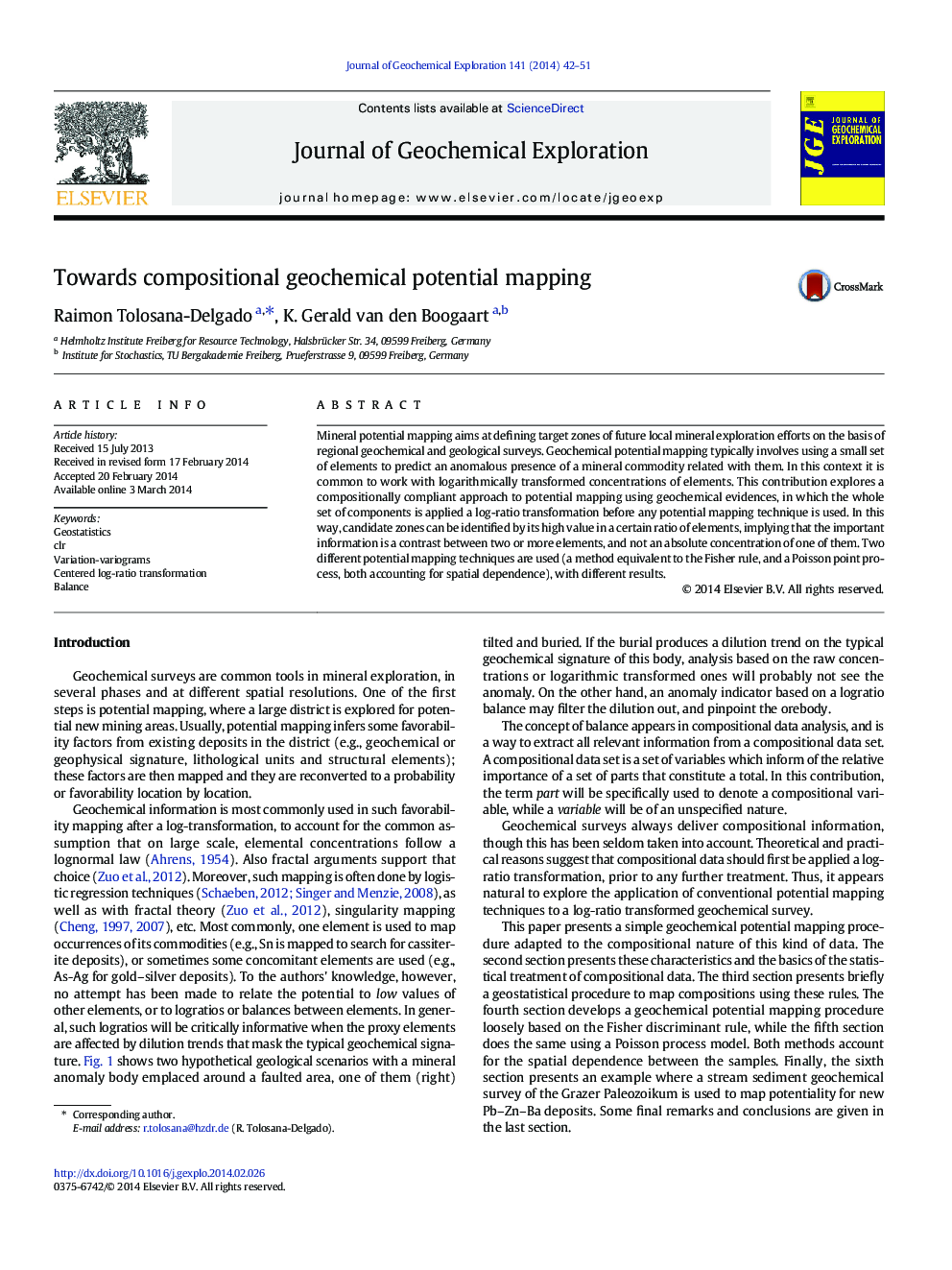| Article ID | Journal | Published Year | Pages | File Type |
|---|---|---|---|---|
| 4457338 | Journal of Geochemical Exploration | 2014 | 10 Pages |
Mineral potential mapping aims at defining target zones of future local mineral exploration efforts on the basis of regional geochemical and geological surveys. Geochemical potential mapping typically involves using a small set of elements to predict an anomalous presence of a mineral commodity related with them. In this context it is common to work with logarithmically transformed concentrations of elements. This contribution explores a compositionally compliant approach to potential mapping using geochemical evidences, in which the whole set of components is applied a log-ratio transformation before any potential mapping technique is used. In this way, candidate zones can be identified by its high value in a certain ratio of elements, implying that the important information is a contrast between two or more elements, and not an absolute concentration of one of them. Two different potential mapping techniques are used (a method equivalent to the Fisher rule, and a Poisson point process, both accounting for spatial dependence), with different results.
